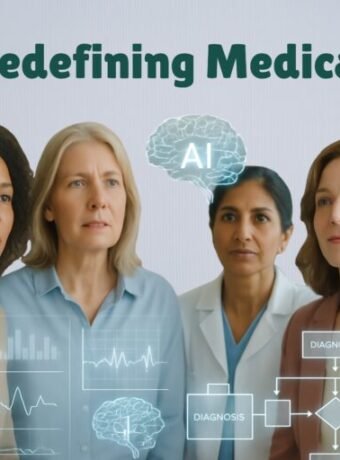Last Updated on June 27, 2025 by Julian Espinosa
Who would have thought that the internet would become senior-friendly? Initially considered the domain of younger generations, digital technology has evolved into an essential component of modern senior care. Senior care technology in the digital age is experiencing a transformative shift, significantly influenced by technological innovations. No longer are seniors limited by conventional methods of care.
The digital era is transforming how we approach senior care. Historically, options were limited, with families often facing difficult choices between independence and safety. With the dawn of the digital age, senior care has taken an optimistic turn, seamlessly integrating technology into daily routines, enhancing both quality of life and independence. The result? Improved quality of life, increased independence, and an empowered senior community.

Embracing the Digital Revolution in Senior Care Technology
These technological advances aren’t just conveniences—they’re lifelines that create meaningful connections and support systems for older adults. In this article, we explore how innovations like wearable health monitors, AI-driven care plans, and telemedicine are transforming senior living. You’ll discover:
- How lightweight devices track heart health and detect emergencies
- Why voice assistants like Alexa are becoming indispensable companions
- The life-saving potential of virtual doctor visits
- The rise of empathetic companion robots designed for meaningful interaction
- Essential tips for staying safe in the digital world
These technologies aren’t just convenient—they’re empowering seniors to maintain independence while staying connected to care networks. Whether you’re tech-savvy or just starting your digital journey, this guide offers practical insights to help you navigate modern senior care solutions with confidence.
Ready to see how technology can enhance your golden years? Let’s dive in.
Prefer to listen rather than read?

The Role of Smart Devices in Senior Care Technology
Imagine a world where a wristwatch does more than just tell time. Welcome to the era of smart devices, game-changers for senior care in the digital age. These intuitive gadgets play an instrumental role in safeguarding seniors’ health and well-being.
Wearable Health Monitors
Wearable health monitors do more than just count steps and calories burned. They serve as personal health guardians for seniors, tracking vital signs continuously and alerting caregivers to potential issues before they become emergencies.
These compact devices are essential for monitoring heart rate, blood oxygen levels, and even detecting falls. For those with cardiac conditions, this capability isn’t just impressive—it can be lifesaving. Many modern health monitors are equipped with automatic fall detection and can immediately send emergency alerts to caregivers or family members, providing peace of mind for everyone involved.
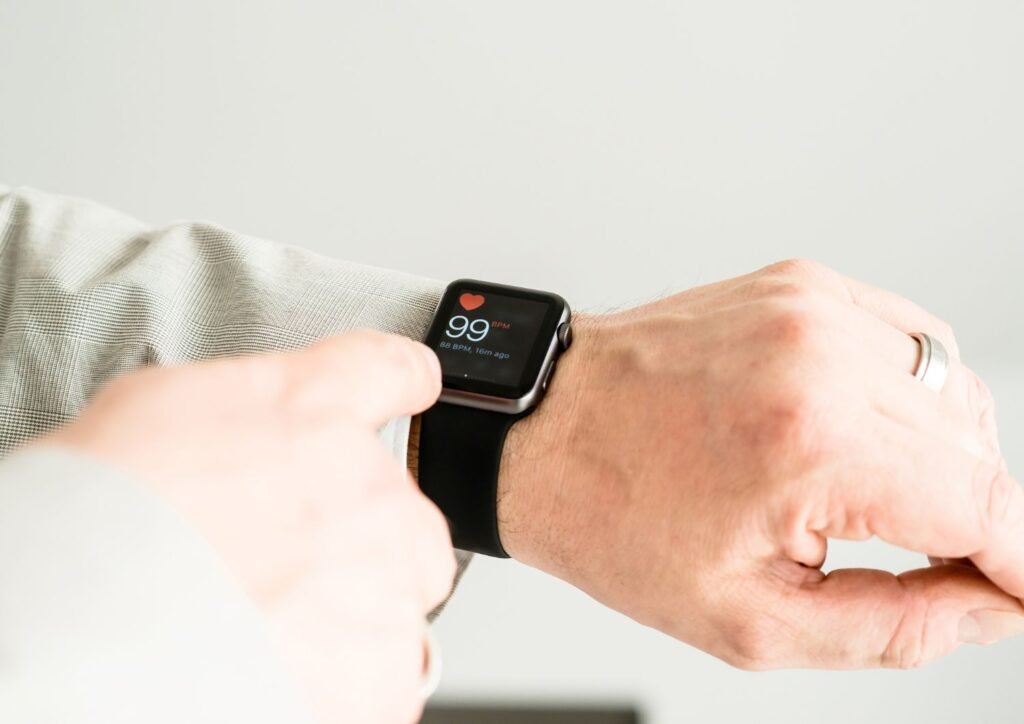
What makes these devices particularly valuable is their unobtrusiveness. They fit comfortably like a standard wristwatch and integrate smoothly into daily routines. Users don’t feel constantly reminded that they’re being monitored for health concerns. With these monitors, seniors maintain their independence while staying connected to necessary care. In today’s world, staying connected is crucial, especially for seniors. These monitors ensure they’re just a heartbeat away from help when needed.
Voice-Activated Assistants
This section explores voice-activated assistants that have become increasingly valuable tools for seniors. You’re likely familiar with names like Alexa, Google Assistant, or Siri. These technologies are more than just high-tech gadgets for technology enthusiasts—they’ve become indispensable companions for many older adults.
Picture this scenario: instead of struggling to remember to take multiple medications at different times, you can simply say, “Hey, remind me to take my medication at 3 PM.” The digital assistant handles the reminder, eliminating the need for handwritten notes or complicated pill organizers. When the time comes, your assistant will alert you—”It’s 3 PM, time to take your medication!”—and you can consider it taken care of.
But these assistants offer more than mere convenience. For many seniors, they serve as vital lifelines. Feeling isolated? You can ask your digital assistant to call your grandchild or play your favorite song. It’s like having a friendly companion at home, seamlessly bridging the gap between the digital realm and everyday life. In our fast-paced world, having reliable assistance can make a significant difference, especially for those who cherish their independence yet appreciate a helping hand now and then.

Telemedicine and Medication Management
Telemedicine has gained significant traction in recent years, particularly following the COVID-19 pandemic. This technology allows seniors to consult with healthcare professionals remotely, eliminating the need for in-person visits and reducing the risk of exposure to infectious diseases.
Virtual consultations enable seniors to receive timely medical advice, prescriptions, and follow-up care from the comfort of their homes. Current research from the American Telemedicine Association indicates that 94% of seniors who tried telemedicine in 2023 reported satisfaction with their experience, citing convenience and time savings as the primary benefits.
Digital medication management systems have transformed how seniors handle complex medication regimens. According to a 2023 study, medication non-adherence among seniors decreased by 42% when using digital medication reminders and smart pill dispensers. These tools send timely reminders, dispense medications at the right times, and provide alerts for missed doses. By promoting medication adherence, these digital solutions enhance safety and contribute significantly to the wellbeing of seniors with multiple health conditions.
The technology isn’t just another buzzword; it’s becoming a lifeline for many seniors worldwide. With urban areas growing increasingly crowded and the lessons learned from recent public health challenges, telemedicine offers a practical solution for accessible healthcare.
However, like every coin with two sides, telemedicine does have its challenges. Not everyone is tech-savvy. Some seniors might find it challenging to adapt. With time, the hope is that technology will become more intuitive, making the transition smoother for everyone involved.

The Role of Artificial Intelligence in Senior Care
Who would have thought that terms like “Artificial Intelligence” or “AI” would become commonplace in senior care discussions? Yet, here we are, with AI technology enhancing daily life for older adults in remarkable ways.
Personalized Health Plans Tailored by AI
AI’s true potential emerges when analyzing comprehensive health data from seniors. By processing information about an individual’s medical history, daily activities, medication usage, and even dietary patterns, AI systems can create highly personalized health recommendations.
Rather than simply saying, “You should do some stretches today,” AI looks at everything: your age, specific health concerns, previous physical activities, and even what you had for dinner last night. It then crafts health suggestions tailored specifically to your current needs and capabilities.
These personalized plans adapt continuously as your health status changes. The AI might recognize that you’re experiencing more mobility difficulties on colder days and suggest indoor exercises instead of your usual walk. This dynamic approach keeps seniors engaged in health-promoting activities appropriate for their changing needs.
Companion Robots: More than Just Machines
Let’s clarify something important: when discussing companion robots for seniors, we’re not talking about science fiction scenarios. Today’s companion robots for seniors are thoughtfully designed, user-friendly devices that provide both practical assistance and meaningful social interaction.
These robots can engage in conversations, remind users about medications or appointments, and even facilitate video calls with family members. Many models are equipped with sensors to detect potential emergencies, such as falls, and can automatically alert caregivers.
The latest companion robots incorporate emotional intelligence features, allowing them to recognize signs of distress or isolation. If they sense something might be wrong, they can proactively engage the senior in conversation or suggest calling a family member.
Studies from the Stanford Center on Longevity (2023) show that seniors using companion robots reported reduced feelings of loneliness and improved overall mood compared to control groups. These findings suggest that robot companions can play an important role in addressing the epidemic of loneliness among older adults.
As AI technology continues to advance, the potential for enhancing senior care grows exponentially. Whether it’s through monitoring daily habits or using predictive analytics to anticipate potential health concerns, the future of AI in senior care looks promising and full of possibilities.
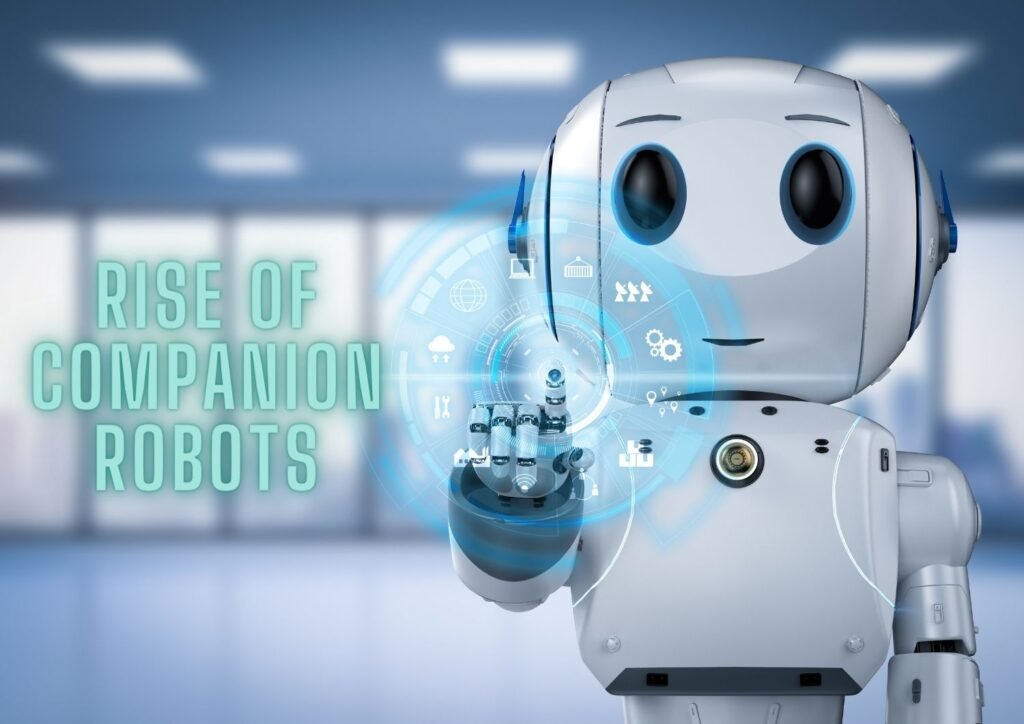
Safety and Security: Making the Digital World Safer for Seniors
Isn’t it remarkable how quickly digital technology has evolved? Just a few decades ago, the word ‘internet’ would have drawn blank stares, but today, it’s an integral part of senior care.
While the digital revolution has brought tremendous benefits in connecting seniors with care resources, it has also introduced new challenges—particularly around cybersecurity. As more seniors go online, there’s an increasing need to address digital safety concerns.
Understanding Digital Safety: Protecting Against Online Threats
Today’s seniors are increasingly embracing digital connectivity. According to a 2024 Pew Research Center survey, 90% of adults aged 65+ now use the internet regularly, a significant increase from 75% in 2021. This surge reflects broader trends, including 86% smartphone ownership among adults aged 50+ and growing adoption of platforms like YouTube (49% of seniors in 2021, up from 38% in 2019). While this connectivity offers opportunities for social engagement, healthcare access, and lifelong learning, it also exposes seniors to heightened risks.
Phishing attempts and online scams specifically targeting seniors have risen by 38% in the past two years, according to the FBI’s Internet Crime Report. These scams often prey on trust and unfamiliarity with digital security practices. Teaching seniors to recognize digital threats is essential for their online safety. This includes identifying suspicious emails, understanding that offers that seem too good to be true probably are, and knowing how to create and manage strong passwords.
Strong passwords are the digital equivalent of sturdy locks on your doors. But creating and remembering complex passwords can be challenging. Password manager applications offer a secure solution, storing all passwords in an encrypted format while providing easy access through a single master password.
Digital literacy extends beyond basic skills like using a tablet or sending emails. It encompasses understanding potential online threats and knowing how to navigate safely in the digital world. Recent programs like Senior Tech Connect have shown that with appropriate training, seniors can quickly become confident digital citizens, capable of enjoying the benefits of technology while minimizing risks.
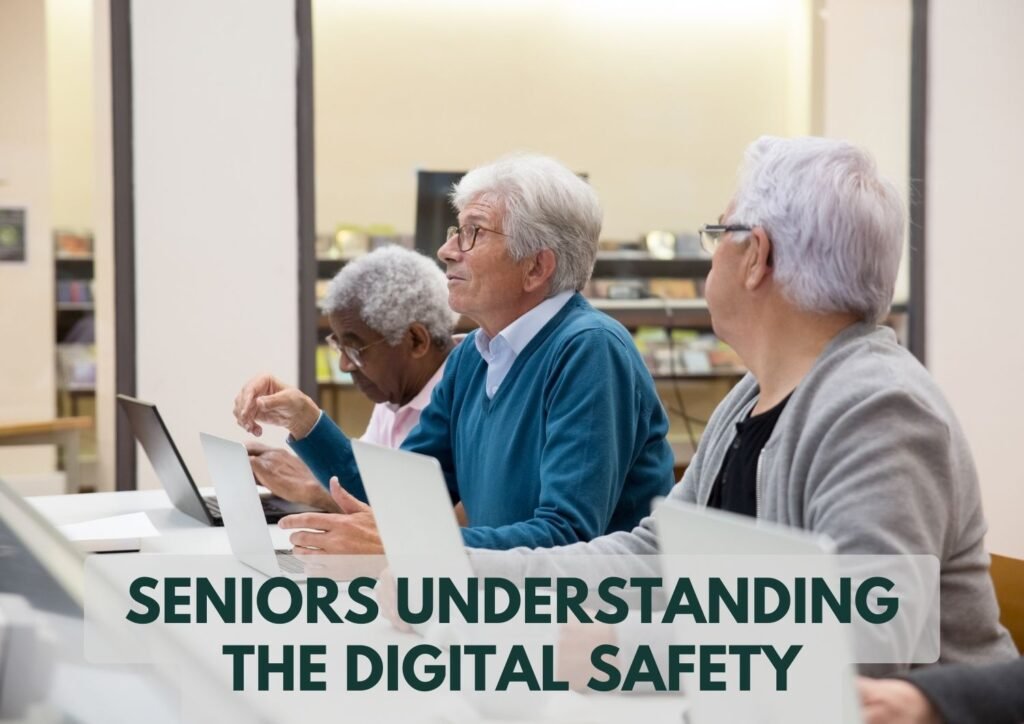
Privacy Considerations
Privacy protection is increasingly important as seniors adopt more digital tools. Educational programs specifically designed for older adults have shown success in teaching essential privacy practices without using technical jargon or creating unnecessary fear.
When configuring privacy settings for seniors, focus on practical, easy-to-understand approaches. For example, rather than explaining complex data policies, show them how to control who can see their social media posts or access their personal information online.
The digital age presents numerous benefits for seniors, but it’s important to balance these advantages with proper privacy and security measures. By implementing robust security practices and educating seniors about safe online behavior, we can ensure they enjoy the benefits of digital connectivity while maintaining their privacy and security.

The Future of Senior Care
By definition, predicting the future involves uncertainty. No one knows exactly what lies ahead, but current trends and emerging technologies offer glimpses into what’s coming next for senior care.
Looking at current research and development in the field of senior care technology, several exciting trends are emerging:
- Integration of AI and robotics will continue to advance, creating more intuitive and responsive care systems for seniors
- Smart home technology will become more affordable and user-friendly, allowing wider adoption among senior populations
- Virtual reality applications specifically designed for seniors will expand beyond entertainment to include therapeutic uses, cognitive training, and virtual travel experiences
- Blockchain technology may revolutionize how medical records and care information are securely shared between healthcare providers
- Wearable technology will evolve to become even less intrusive while monitoring more health parameters with greater accuracy
The COVID-19 pandemic accelerated digital adoption among seniors, with telehealth usage among adults over 65 increasing by 300% between 2019 and 2022, according to the Journal of the American Medical Association. This rapid shift demonstrated that seniors can and will embrace technology when it offers clear benefits and is designed with their needs in mind.
The future of senior care technology isn’t about replacing human care with machines, but rather enhancing connections and providing tools that support independence while maintaining dignity. The most promising innovations are those that strengthen family bonds, facilitate communication, and help seniors remain active participants in their communities.
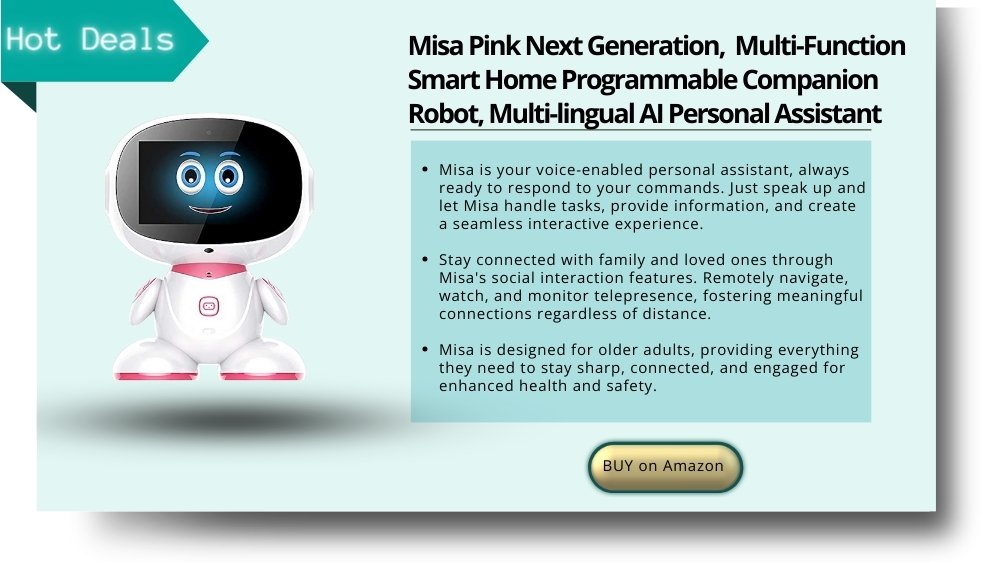
Conclusion
With technology-driven innovations such as telehealth, smart home solutions, AI-driven applications, and robust cybersecurity measures, seniors can look forward to a future that offers them greater independence, safety, and connectivity. As we embrace these advancements, we must also prioritize privacy and security to ensure that seniors can enjoy the benefits of the digital age without compromising their well-being.
There’s no denying that the future of senior care technology in the digital age looks promising. It’s a harmonious blend of technology, empathy, and care. As we move forward, the goal is to harness these digital tools to offer seniors a life that’s not just about existing but truly living.
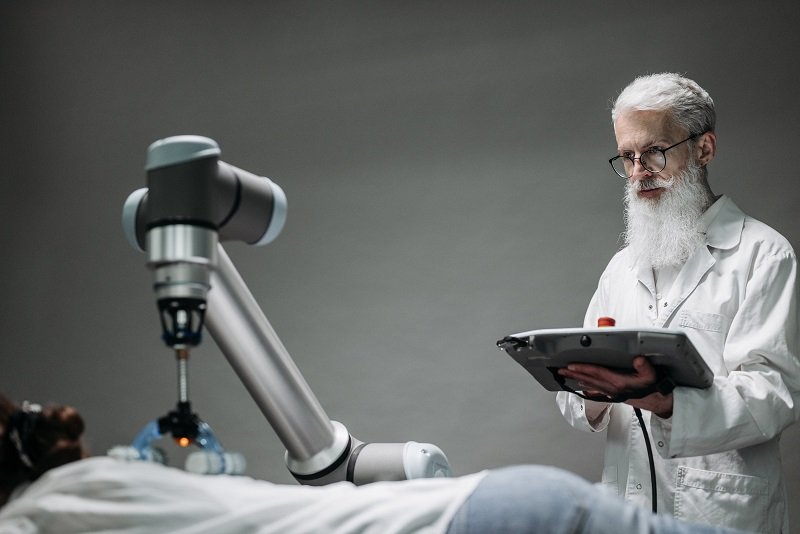
FAQ: Senior Care Technology
- How can interactive technology help older adults live alone and ease caregiver fatigue?
- Interactive technology empowers older adults to maintain independence by supporting daily tasks and reducing reliance on caregivers. It fosters social connections to combat isolation, offering features that promote engagement with family and friends, enhancing mental well-being.
- For caregivers, these platforms reduce stress by providing health monitoring tools and alerts for early detection of potential issues. Additionally, the ability to collect and analyze user data ensures timely intervention for cognitive or health-related concerns, creating a safer and more connected experience for everyone involved.
- How does the visualization interface help caregivers understand the data collected by sensors?
- Visualization interfaces simplify complex sensor data into actionable insights, allowing caregivers to better understand and address the needs of older adults. By highlighting patterns and anomalies in a user-friendly format, caregivers can quickly identify daily routines and deviations that may signal potential concerns.
- The technology flags unusual readings and provides comprehensive data views, empowering caregivers to deliver personalized and effective care. This approach to data visualization bridges the gap between sophisticated monitoring technology and practical caregiving applications.
- How does assistive technology support independent living for seniors?
- Assistive technology plays a vital role in helping seniors maintain independence despite challenges like chronic conditions or cognitive decline. It enhances daily life through medication reminders, health monitoring, and automated home systems for safety and convenience.
- Smart home modifications, including voice-activated assistants and automated lighting, create safer environments with minimal physical intervention. Communication devices ensure families and caregivers stay connected while respecting seniors’ autonomy, perfectly balancing safety with independence.
- What are the challenges faced by older adults with mild cognitive impairment or Alzheimer’s disease?
- Older adults experiencing mild cognitive impairment or Alzheimer’s disease often face several challenges in their daily lives. Key difficulties include managing essential tasks such as organizing and taking medications correctly, ensuring bills are paid promptly, and keeping track of and attending important appointments. These cognitive hurdles can significantly impact their ability to maintain independence and manage everyday responsibilities effectively.
- What modifications might older adults need to make to their homes to remain safe while aging in place?
- Creating a safer home environment is essential for older adults who wish to age in place. In the bathroom, grab bars, walk-in showers with non-slip mats, and raised toilet seats reduce fall risks and enhance accessibility. Kitchens can be made more functional with lowered countertops, pull-out shelves, and lever-style faucets, which are easier to use for those with mobility issues.
- General modifications like improved lighting, stair lifts, and wider doorways accommodate mobility aids and enhance safety. Additionally, installing non-slip flooring and ramps at entry points ensures secure and accessible navigation throughout the home. These adjustments promote comfort and independence for aging adults.
- What role does community-based or family resources play in maintaining older adults’ independence?
- Community and family resources are crucial for supporting the independence and well-being of older adults. They provide a network of emotional and practical support while introducing technologies that simplify daily tasks and monitor health.
- These resources also facilitate proactive planning by creating care strategies that anticipate challenges and empower seniors to make decisions about their care. By utilizing these networks, older adults can maintain autonomy and dignity, enhancing their quality of life.
References
- American Telemedicine Association. (2024). “Transformational Telemedicine: Programs’ Successes and Shortages, and Patient Satisfaction“.
- Journal of Medical Internet Research. (2022). “Factors Affecting Medication Adherence Among Older Adults Using Tele-Pharmacy Services: A Scoping Review“.
- Federal Bureau of Investigation. (2024). “Internet Crime Report.”
- Journal of the American Medical Association. (2024). “Primary Care Practice Telehealth Use and Low-Value Care Services” 327(5), 468-470.
- Pew Research Center (2024). “Americans’ Use of Mobile Technology and Home Broadband” and “Internet, Broadband Fact Sheet“
Disclaimer
The content provided on MySeniors.World is for informational purposes only and is not intended as either financial or medical advice. Always consult a qualified professional before making any investment or health-related decisions.
Posts may contain affiliate links, meaning we earn a commission – at no additional cost to you, if you click through and make a purchase. Your support helps us continue providing valuable content.



